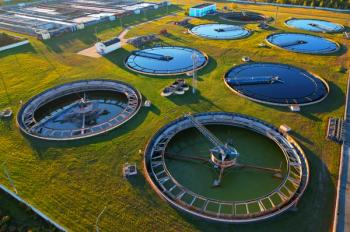
E-Separation Solutions
- E-Separation Solutions-03-13-2014
- Volume 0
- Issue 0
The LCGC Blog: A View of Separation Science Research at a Czech Conference
The United States woefully underfunds international collaborations with the Czech Republic. Yet, it is a country that produces excellent scientists who are distinctly passionate about science, and who have been educated to demonstrate not only a strong mastery of chemistry basics, but also superb knowledge of the integration of high-level mathematics and computer programming skills into their science. One need not look very far in the separation science and mass spectrometry (MS) fields in the United States to find eminent leaders with roots in the Czech Republic.
One of the most enjoyable parts of my job is traveling to interesting places to meet new and old science friends. I have been privileged to regularly count among these travels visits to the Czech Republic to interface closely with the members of the Department of Analytical Chemistry at Palacký University in Olomouc, Czech Republic. Perhaps relatively unknown to the world at large, Olomouc is the fifth largest city in the Czech Republic, situated in the region of Moravia (eastern Czech Republic). Palacký University is the second oldest university in the country (behind only Charles University in Prague), but just in the past several years, with the support of the European Union, there has been a large surge in the quality and quantity of scientific research and resources available. I have had the pleasure of hosting numerous students and faculty from Palacký University in my labs over the years, and our collaboration continues to mature as we explore new analytical techniques and applications together. Incidentally, I think it is important to note that all support for such travels (even much of mine to visit them) has come from the government of the Czech Republic and the European Union. The United States woefully underfunds international collaborations with the Czech Republic. Yet, it is a country that produces excellent scientists who are distinctly passionate about science, and who have been educated to demonstrate not only a strong mastery of chemistry basics, but also superb knowledge of the integration of high-level mathematics and computer programming skills into their science. One need not look very far in the separation science and mass spectrometry (MS) fields in the United States to find eminent leaders with roots in the Czech Republic.
As I write this, I am on the train from Olomouc to Prague (~2.5 h), returning from the Advances in Chromatography and Electrophoresis & Chiranal 2014 conference, which has been hosted at Palacký University for the past 19 years. Originally initiated by the patriarch and matriarch of Chiranal, Prof. Zdenek Stransky and Prof. Eva Smolkova-Keulemansova, the conference now boasts a semiannual attendance of 110–150 participants. I have attended four of these meetings since my days as a post-doc in Vienna, and following the exceptional program (both scientific and social — Czech people also make exceptional beer) I experienced this past week, I felt compelled to dedicate a blog entry to it.
The bookends of the conference were plenary lectures from Prof. Frantisek Svec (University of California at Berkeley) and Prof. Wolfgang Lindner (University of Vienna). In a fine ceremony, Prof. Svec was awarded the Palacký University Medal (dedicated to the 440th anniversary of the founding of the University). Prof. Lindner presented his lecture at the close of the conference as a part of the Rudolf Zahradník Lecture Series, which is organized by Regional Centre of Advanced Technologies and Materials at Palacký University. The facility is a modern, well-equipped center supported by the EU. Lindner was awarded the commemorative medal of Palacký University by its rector, personally.
Prof. Svec provided an engrossing overview of the development of monolithic columns. He focused particularly on his and others’ research in the area of polymeric monoliths. The underlying phenomenon of interest in this field is the move toward second-generation monoliths that can more effectively accommodate fast and efficient separation of both small and large molecules. First-generation polymeric monoliths have generally been limited to separation of macromolecules, given their morphology and lack of suitable porosity for retention of small molecules. The topic of monoliths is certainly primed for an upcoming blog entry. Prof. Lindner closed the conference to a packed lecture hall with an exceptional lecture on conceptual aspects of chiral separations. Building the audience’s understanding from first principles about chirality and the nature of (and need for) stereoselective interactions for chiral separations, he continued on to recount his exploration (for the past approximately 25 years) of organic small-molecule chiral selector phase development. While I was pleased to see the presentation of some slides I myself had helped him to develop when I was a post-doc, it was clear that they had been constantly updated, adapted, and improved, much like the continual development of new selectors for new phases. The lecture culminated in the presentation of aspects of performance of newer and unique zwitterionic stationary phases, which were shown to exhibit exceptional selectivity for discriminating enantiomers of compounds ranging from amino acids to peptides to important pharmaceutical compounds. Again, it was a lecture clearly deserving of a separate blog entry — I see my task of picking topics in the coming months partially fulfilled.
The conference program framed by these plenary lectures included a stimulating oral program covering a wide swath of chromatography, electrophoresis, sample preparation, MS, and chiral analysis. Just to give you a taste, I filled a small notebook on things I learned about:
- Nanoparticle extraction of oxidized phospholipids (for example, antibodies conjugated to gold nanoparticles can exhibit a dissociation constant of approximately 100 pM toward target lipids)
- Isotachaphoresis for sample preparation and preconcentration to aid trace determination of small molecules in complex matrices (for example, target analytes can be concentrated by as much as five or six orders of magnitude with the correct setup — researchers in Slovakia have been working on this type of technology for many years);
- Choice of high-performance chiral stationary phases for the separation of important bioactive stereoisomers, like unusual amino acids (among current crown ether, cyclodextrin, and cinchona alkaloid-based phases, an impressive toolbox has been amassed and mechanisms are well understood to affect separation of virtually any chiral small molecule — the degree of collaboration among different research groups in Central Europe, Western Europe, Asia, and the United States on this topic is a real testament to the spirit of science)
- Nanoscale architectures and microchip formats are poised to offer astonishing new tools for lab-on-a-chip processes (for example, not only can the height, spacing, and chemistry of nanoposts be used to effectively filter and sort molecules from complex mixtures as they travel through microchannels, more-effective use of magnetic nanoparticles is enabling advanced chip formats with which highly selective phases easily can be loaded, applied, and then disposed of to increase practical operation of analytical microchips.
- Capillary electrophoresis (CE) is constantly being improved for effective chiral and achiral separations, as well as host–guest binding interactions (for example, considerations for simplification of complex interaction systems, as well as improvements to the understanding of competing background electrolytes begins to start painting a more attractive picture for the routine use of CE beyond the academic research laboratory).
The list could go on. Although there were no parallel sessions to offer choices to attendees, alternate sessions weren’t necessary. The organizers did a fantastic job of putting together an engaging symposium. On a related note, I have grown to believe that glycomics and glycoproteomics for biomarker discovery might represent one of the most challenging research areas facing today’s analytical scientists — I will not be rushing into that field any time soon, but it is clearly vital that there are others working on this important topic.
The conference possessed all of the other necessary pieces, as well. I would estimate that 40–50 posters were present for viewing. Students and researchers presented research in areas easily as diverse as those presented in the oral sessions, if not broader. The work aptly encompassed the general title of the conference, with applications ranging from pharmaceuticals to nutraceuticals, from food science to clinical science, and from personal care products and pesticides to proteins and peptides. There were also at least 15 tables from industrial sponsors — a particularly impressive show of support and dedication for an intimate symposium. The social program was excellent (don’t believe them if they tell you I was singing karaoke) and I appreciated the chance to not only meet some new academicians from around Europe, but also to meet leaders from established and emerging new industries in the Czech Republic.
So, I would like to congratulate the organizers on a job well done. Of course, it is also my intent to spread the word about this gem of a conference so that some of you readers might think about adding it onto your agenda. The next one will be held in June or July 2016. In the meantime, I look forward to the next time I can travel across the big pond to visit with new and old friends alike, and share in their science. There is something special about a small intimate conference that a Pittcon or an ASMS can’t quite capture; and when it is well structured so that the majority of offerings resonate well with one’s interests, then it’s time well spent. Mix in a few Czech beers, and I’ll call that nearly perfect. Nazdraví!
Previous blog entries from Kevin Schug:
Articles in this issue
almost 12 years ago
LCGC TV: Better GC MethodsNewsletter
Join the global community of analytical scientists who trust LCGC for insights on the latest techniques, trends, and expert solutions in chromatography.





